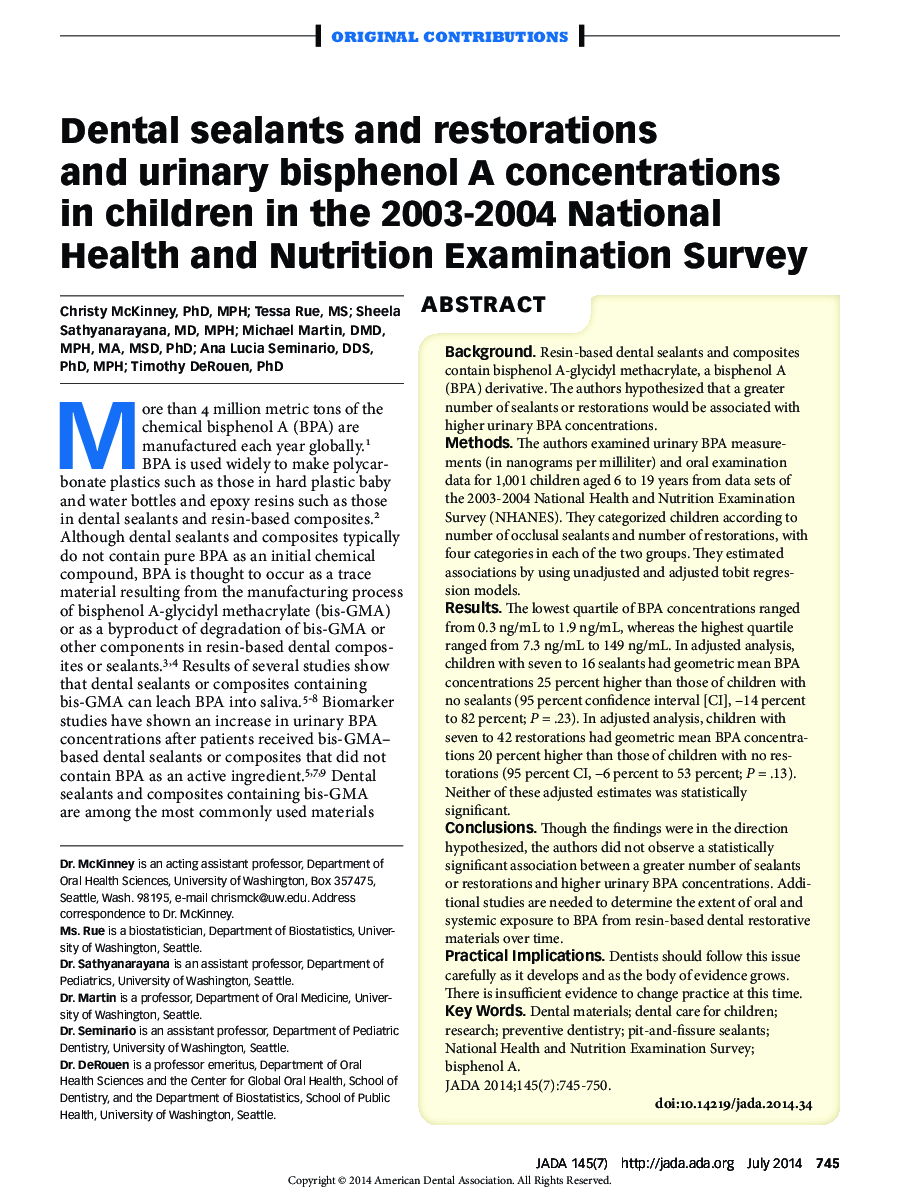| کد مقاله | کد نشریه | سال انتشار | مقاله انگلیسی | نسخه تمام متن |
|---|---|---|---|---|
| 3137009 | 1584988 | 2014 | 6 صفحه PDF | دانلود رایگان |
ABSTRACTBackgroundResin-based dental sealants and composites contain bisphenol A-glycidyl methacrylate, a bisphenol A (BPA) derivative. The authors hypothesized that a greater number of sealants or restorations would be associated with higher urinary BPA concentrations.MethodsThe authors examined urinary BPA measurements (in nanograms per milliliter) and oral examination data for 1,001 children aged 6 to 19 years from data sets of the 2003-2004 National Health and Nutrition Examination Survey (NHANES). They categorized children according to number of occlusal sealants and number of restorations, with four categories in each of the two groups. They estimated associations by using unadjusted and adjusted tobit regression models.ResultsThe lowest quartile of BPA concentrations ranged from 0.3 ng/mL to 1.9 ng/mL, whereas the highest quartile ranged from 7.3 ng/mL to 149 ng/mL. In adjusted analysis, children with seven to 16 sealants had geometric mean BPA concentrations 25 percent higher than those of children with no sealants (95 percent confidence interval [CI], −14 percent to 82 percent; P = .23). In adjusted analysis, children with seven to 42 restorations had geometric mean BPA concentrations 20 percent higher than those of children with no restorations (95 percent CI, −6 percent to 53 percent; P = .13). Neither of these adjusted estimates was statistically significant.ConclusionsThough the findings were in the direction hypothesized, the authors did not observe a statistically significant association between a greater number of sealants or restorations and higher urinary BPA concentrations. Additional studies are needed to determine the extent of oral and systemic exposure to BPA from resin-based dental restorative materials over time.Practical ImplicationsDentists should follow this issue carefully as it develops and as the body of evidence grows. There is insufficient evidence to change practice at this time.
Journal: The Journal of the American Dental Association - Volume 145, Issue 7, July 2014, Pages 745–750
